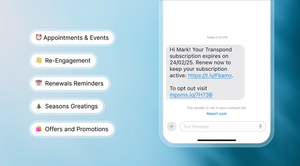Modern marketing has changed over the years, from focusing on generating a high volume of leads to generating demand. Both demand generation and lead generation are key parts of building a customer base. They each make up a key part of inbound sales, a modern sales methodology that acknowledges the amount of power customers have in the buyer’s journey.
To effectively utilize lead and demand generation marketing, you need to understand your target audience and the nuances of each strategy. Demand gen focuses on creating brand awareness and interest, while lead generation aims to convert that awareness into qualified leads.
In this blog, we’ll explore the pros and cons of demand generation vs lead generation, the key components that make up each strategy, and how you can implement demand and lead generation strategies in your own business.

What is the difference between demand generation and lead generation?
The terms demand and lead generation are often used together, but they are each applied differently to generate different results.
Each term refers to different stages of the AIDA model, a classic marketing and sales framework that outlines the stages a consumer goes through when interacting with a brand or product.
It stands for:
- Attention: This stage is about capturing the consumer’s attention through eye-catching ads, compelling headlines, or other strategies that make the consumer notice your brand.
- Interest: Once you have their attention, your marketing and sales team needs to generate interest. This involves presenting information that aligns with the needs or desires of paying customers, often through intriguing content or personalized messages.
- Desire: Here, you need to cultivate a desire for your product or service. This involves highlighting the benefits and unique selling points (USPs), showing how it can solve a problem or improve their situation.
- Action: The final stage is to prompt the consumer to take action, such as making a purchase, signing up for a newsletter, or requesting more information. Effective calls to action (CTAs) are crucial in this stage to convert interest into a tangible outcome.
Demand generation strategies are part of the Attention and Interest stages of the AIDA model, while lead gen campaigns focus on the later stages to help with lead nurturing.

What is demand generation?
Demand generation creates awareness and interest in your products or services among potential customers through various marketing activities such as advertising, relevant content creation, and events that introduce your brand to prospective customers. Demand generation content engages and educates potential customers by providing valuable, actionable insights that help solve their pain points. These efforts build a foundation for future sales and help generate leads.
A robust demand generation strategy goes beyond just creating content for your target audience. It requires a strategy that builds buzz and leads to sales through clear objectives and actionable steps. The goal is to increase interest in your products and services by educating customers with engaging content like videos, blog posts, and social media campaigns.
How to build a demand generation strategy
1. Employ tools focused on amplification and analysis
Utilizing a smart tech stack can help you amplify your efforts, and enhance the efficiency, effectiveness, and performance of your demand generation campaigns. Ad targeting tools can significantly boost your demand generation initiatives, helping you reach a wider target audience and gain deeper insights into the performance of your campaign.
2. Set clear goals
To create a successful demand generation campaign, you need to establish goals centered around increasing your brand's visibility. Aim for objectives like brand lift, enhanced visibility, increased website traffic, and a greater share of voice in your industry.
Setting clear and focused goals, like SMART objectives, can help you measure the impact of your efforts and adjust strategies as needed.
3. Build awareness
Building and maintaining brand awareness is crucial in a competitive marketing landscape. An effective demand generation strategy requires brand awareness campaigns that leave positive and long-lasting impressions on potential buyers. This strategy can translate to high-quality leads and better revenue in the long term.
4. Explore alternative marketing strategies
To capture attention, consider alternative marketing strategies that align with your brand. Techniques such as influencer marketing, experiential marketing, product placement, guerrilla marketing, lifestyle marketing, and branded entertainment can significantly enhance brand awareness and help you stand out in a crowded market.
5. Create informative free content
Producing valuable, free content like social media posts, blogs, webinars, podcasts, videos, case studies, and market reports can build a brand’s presence. This content helps establish a strong brand voice as well as positions you as an authority within your industry.
By offering useful information and insights, you attract and engage your audience, fostering trust and interest in your brand. An effective content marketing strategy not only educates your audience, positioning you as an industry leader but also drives long-term engagement and loyalty.
What is lead generation?
Lead generation describes a mix of marketing activities aimed at steadily increasing consumer interest and nurturing it until a prospect converts into a paying customer. Lead generation content is crucial in driving brand awareness and converting leads by delivering value and addressing the stage of the purchase journey. The primary goal is to engage and capture potential customers as early as possible in their buyer’s journey.
Lead generation tactics help marketing teams gather information that they can pass to the sales team to close the deals. This collected data helps when creating an ideal customer profile (ICP), which serves as a framework for identifying similar leads that are likely to make a purchase.

How to build a lead generation strategy
1. Establish a lead capture model
Developing a strategic lead capture plan helps move prospects through your sales funnel. This plan heavily relies on web forms to collect data from visitors on your landing page. You can enhance the efficiency of your lead capture model by using solutions that minimize the number of fields required on the form.
2. Determine and develop your lead magnets
A lead magnet is an offer a brand provides its audience in exchange for their email, phone number, or contact information. The offer is typically a downloadable resource or digital tool that your brand gifts to your prospects. Lead magnets can include product trials, gated content like whitepapers or eBooks, coupons, discounts, or other exclusive, time-sensitive deals, enabling you to engage potential leads who have shown interest in your brand.
3. Optimize landing pages
Landing pages are a big part of your lead magnets. They act as destinations for ad CTAs, keeping leads focused by minimizing distractions and providing clear, incentivized calls to action. This helps you capture and develop their interest, moving them towards conversion.
4. Experiment with social media
Social media plays a significant role in lead generation so be sure to utilize both paid and organic channels to make the most of what they have to offer. Platforms like X (formerly Twitter), Facebook, and LinkedIn offer tools to promote your incentives.
5. Utilize marketing automation workflows
Marketing automation workflows help you create systems and processes that expand your audience reach. They also allow you to monitor and evaluate the effectiveness and performance of your lead generation campaigns.
6. Develop a lead scoring system
Lead scoring systems enable you to prioritize your inbound leads based on their level of engagement and quality. This helps you focus on leads that are more likely to convert and spend less time on other sales and marketing efforts.
7. Explore remarketing
Remarketing is a way to stay in touch with your site visitors by attempting to reach them on other parts of the internet. For example, if a potential customer visited your site, you could remarket to them via social media ads. This tactic is a great way to recapture the attention of interested prospects by offering them a great deal, collecting their information, and turning them into viable leads.

Metrics to track demand generation vs lead generation
Marketing metrics are a crucial part of measuring and tracking both your demand generation and lead generation success. Some of the most important variables to track include:
- Lead volume: Measures the total number of leads generated to evaluate the effectiveness of your demand generation efforts.
- Lead quality: Assesses the quality and fit of leads based on criteria such as engagement level and likelihood to convert.
- Conversion rate: Tracks the percentage of leads that progress through the sales funnel, indicating the success of your lead nurturing and conversion strategies.
- Cost per lead (CPL): Calculates the cost associated with acquiring each lead, helping you understand the efficiency of your marketing spend.
- Cost per acquisition (CPA): Measures the total cost required to acquire a customer, providing insights into the overall efficiency of your demand generation campaigns.
- Customer acquisition cost (CAC) per channel: Evaluates the cost of acquiring a customer through different marketing channels, helping to identify the most cost-effective channels for demand generation.
- Time to Conversion: Tracks the average time it takes for a lead to move through the sales funnel and become a customer, allowing you to identify and address any bottlenecks in your process.
- Return on investment (ROI): Measures the financial return generated from your lead generation activities compared to the costs involved, helping you determine the overall success and profitability of your campaigns.
- Lead Source: Identifies which channels (e.g. social media, email marketing, organic search) are driving the most leads, enabling you to focus your efforts on the most effective sources.
Types of leads to consider
An important thing to consider while conducting both demand and lead generation activities is lead qualification. You can categorize leads based on their engagement with your brand and their stage in the buyer's journey. Examples of leads include:
- Marketing Qualified Lead (MQL): These are prospects who interact with your marketing content but remain at the top of the sales funnel. They still need nurturing as they aren’t ready to engage with the sales team.
- Sales Qualified Lead (SQL): These leads show clear signs of interest in purchasing your product or service. Actions such as signing up for a demo or visiting the pricing page indicate they are ready for direct sales interaction.
- Product Qualified Lead (PQL): These leads have used your product, often through a free trial or a limited-feature version. They demonstrate their willingness to pay for the product through specific usage patterns, similar to those of existing paying customers.

How to combine demand generation with lead generation in your business strategy
As a business, you shouldn’t be choosing between demand generation and lead generation. Instead, consider how these methods can collaborate to form a seamless customer acquisition strategy. Although these processes are distinct, they should complement each other to create a system that converts consumers into interested prospects, and then into customers.
For example, a business could produce valuable free content, like an eBook, as part of its demand generation strategy to spark interest in the brand. Pairing this with a lead generation strategy, such as offering the eBook as a piece of gated content, can maximize marketing efforts by capturing interested consumers' contact information.
Successful strategies require continuous experimentation and growth. Constantly refining and optimizing both demand and lead generation methods is essential for business success.
Wrapping up
Understanding the key differences between demand generation and lead generation is essential for businesses wanting to make the most of their marketing and sales activities. While demand generation focuses on creating awareness and interest, lead generation captures and nurtures these prospects into customers.
By combining both strategies, businesses can create a seamless customer acquisition process, effectively converting consumers into interested prospects and, ultimately, loyal customers. Continuous experimentation and growth are vital to refining these strategies and achieving long-term success.




